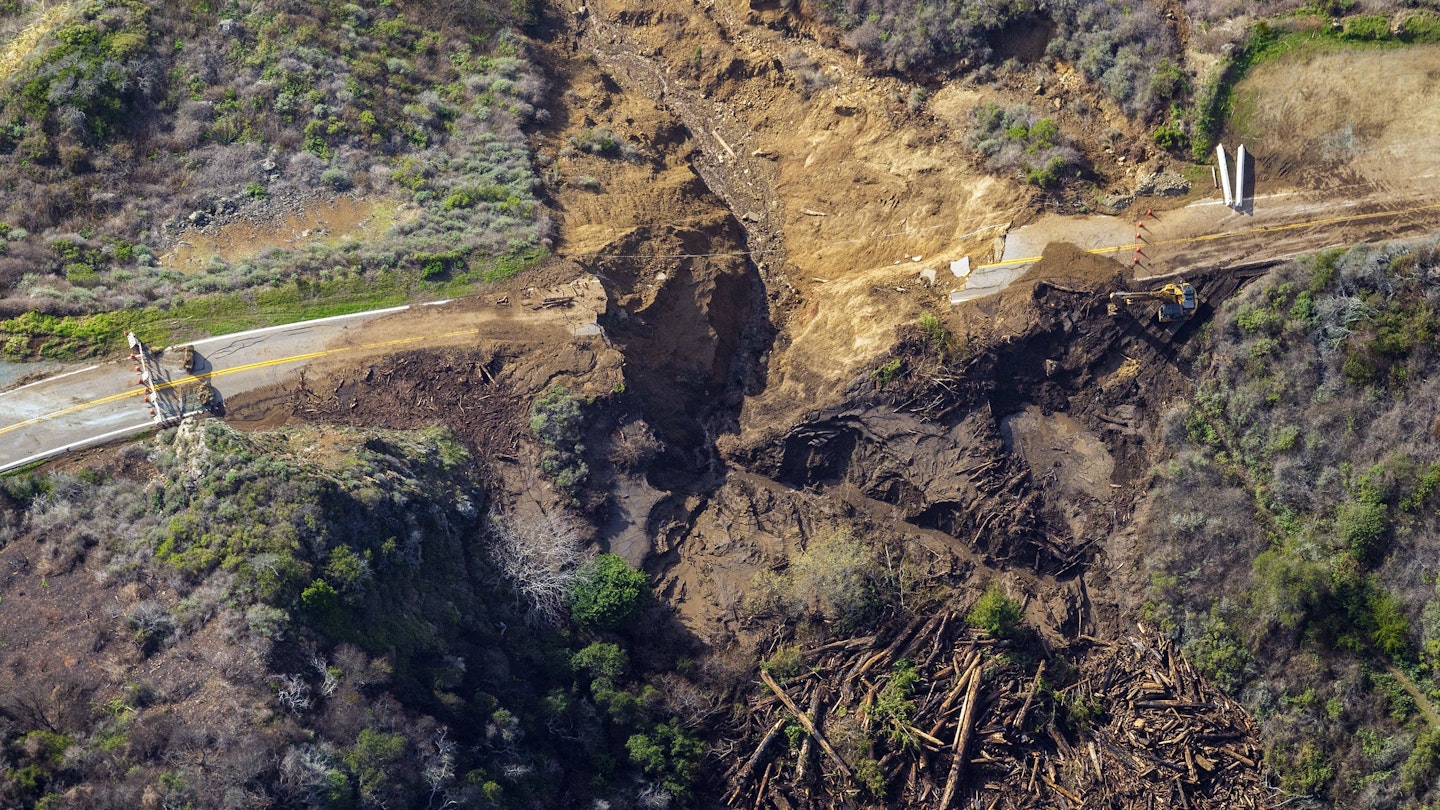Highway 1 Collapse in California: Travel Impact Update
A large section of California’s Highway 1 has collapsed into the Pacific Ocean after heavy rain from a winter storm caused serious damage. Fortunately, nobody was injured as the road had been closed days earlier to prevent accidents from possible mudslides and rockslides.
The damage occurred at Rat Creek, approximately 15 miles south of Big Sur and 50 miles from Monterey. Construction workers from the California Department of Transportation had earlier observed the rain causing trees, boulders, water, and mud to accumulate on the highway. Upon returning to conduct repairs, they discovered that both lanes had fallen into the ocean, creating a considerable 150-foot-wide gap. Footage captured at the scene reveals a large V-shaped scar leading down to the ocean.

According to officials, debris flow from the hillside above the roadway overwhelmed the drainage infrastructure and eroded the road, leading to its collapse. Highway 1 is regarded as the most scenic route to travel between Los Angeles and San Francisco. It is also one of the USA’s most renowned road trip destinations, aside from Route 66. This iconic highway runs along much of the California coastline, offering an unparalleled experience filled with breathtaking views.
This unfortunate incident isn’t a first for the road. Another section was closed for 18 months in the past due to a mudslide that resulted in rocks falling onto it, with repairs concluding in 2018. This current event transpired about a mile south of the burn scarring left by the Dolan Fire, which severely impacted the state last summer. It is projected that repairs will cost millions of dollars, and timelines for restoration remain uncertain. Travelers can opt for the parallel highway, US 101, but they should expect significantly longer travel times.




